In this Jeff's Place post you'll find Part 2 of my "sneak peek" of the Audio Note (UK) Oto Phono SE Signature integrated amplifier feature review that will be coming to Positive Feedback in the very near future.
If you haven't yet read the Part 1 "sneak peek" yet you can read it HERE.
The Audio Note (UK) Oto Phono SE Signature Integrated Amplifier
I find the Oto Phono SE Signature Integrated Amplifier to be a particularly interesting musical device. The Oto – Oto means “sound” in Japanese – has undergone several stages of evolutionary development over its many years of production.
The original Oto push-pull integrated amplifier existed prior to Andy Grove’s arrival at Audio Note (UK). However, upon Andy’s arrival he redesigned the Oto as a single-ended-pentode integrated amplifier in 1991, twenty-nine years ago now.
A few years ago, Andy went back and redesigned the original Oto push-pull integrated amplifier design as well, incorporating his current ideas of what a high-performance push-pull integrated amplifier should be.
An enduring design in an audio component always impresses me, and the Oto has legitimately become a classic design in integrated amplifiers, and its enduring popularity over its nearly thirty years of production endorses the essential rightness of Andy Grove’s designs.
Today a customer looking at the Oto is offered a choice among several high-performance models, the push-pull pentode version (the Oto PP), a parallel single-ended-pentode version (Oto SE), and a parallel single-ended-pentode version which incorporates Audio Note (UK)’s most current concepts and components for achieving state-of-art performance that was released in 2016 (Oto SE Signature).
All of the Oto models are available as a line stage version, or as a version with a built-in valve phono stage (my choice), and the Oto SE Signature is also available in a “Silver” version with corresponding silver wire & components.
The version that is the focus of this article is the Oto Phono SE Signature ($6330 USD), and there’s a number of aspects of this particular version of the Oto which pushed all my “ooh ahh” buttons as a high-performance audio enthusiast and music lover.
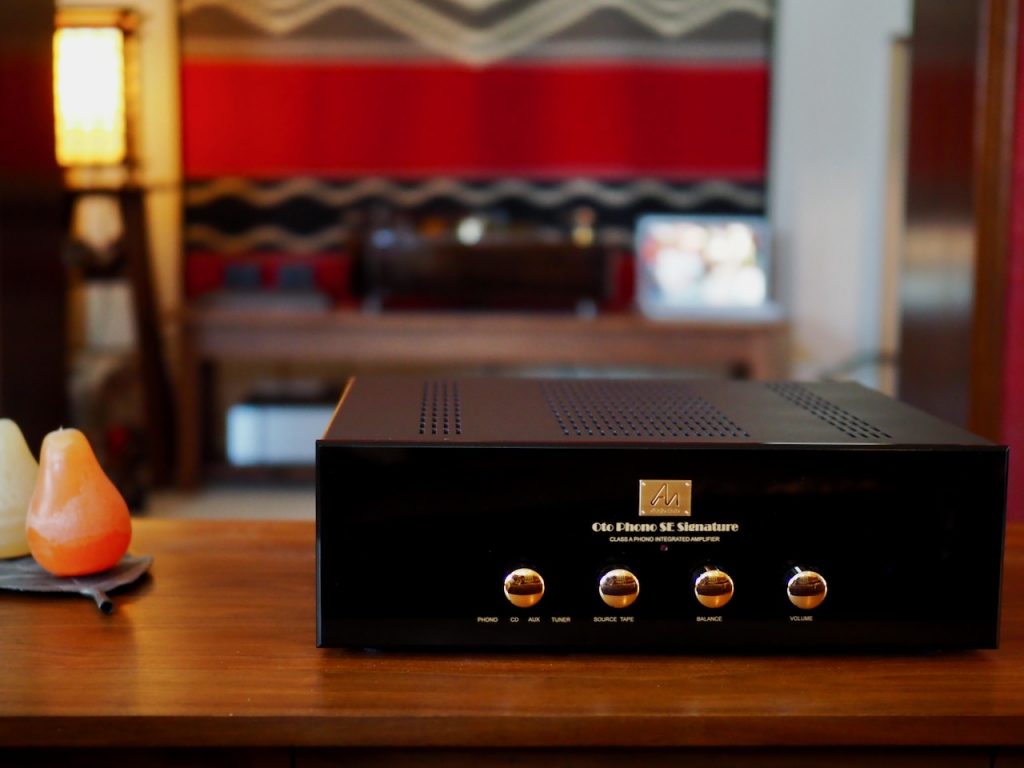
First of all, long time readers know that I am a big fan of integrated amplifiers because of their huge performance value for the dollars spent.
While the Oto Phono SE Signature at $6330 USD is not inexpensive in real-world terms, considering its overall performance, boutique build quality, and its included features, the Oto Phono SE Signature represents enormous value to the serious music lover or high-performance audio enthusiast at its price point.
Secondly, the Oto Phono SE Signature includes an internal vacuum tube phono section, which provides even more value and allure to a vinyl lover like myself (it’s also a pretty special vacuum tube phono section, which I’ll tell you more about a bit later).
Thirdly, the Oto Phono SE Signature is an EL84 amplifier, and I have a particular fondness for EL84 amplifiers. The EL84 is a vastly under-appreciated vacuum tube that can sound fantastic, with the added benefit of being very cost effective and inexpensive to maintain over the long haul.
The EL84 vacuum tube is not only used in audio amplifiers to play back recorded music, but notably it is also used in guitar amplifiers to make music, like the legendary Vox AC30/AC15 guitar amplifiers, for example, and has also become popular among boutique amp builders in both the audio and guitar sectors.
The EL84 is a great tube on its own merits, and when coupled with the fact that it is a readily available and affordable vacuum tube, it makes the EL84 an incredible value for guitarists, music lovers, and audiophiles alike.
Fourth, the Oto Phono SE Signature is a parallel single-ended-pentode amplifier, and I love the way EL84 single-ended-pentode amplifiers play music.
EL84 single-ended-pentode amplifiers sound so live, real, visceral, engaging, and emotionally involving on my various vintage Altec loudspeakers.
I’ve enjoyed using an EL84 single-ended-pentode integrated amplifier for a decade - the now discontinued spartan Almarro A205A - and it always impresses me with its superb performance.
Oto Phono SE Signature Integrated Amplifier Features
Starting with the front of the Oto Phono SE Signature, let’s do a walk-about of it to check out its features.
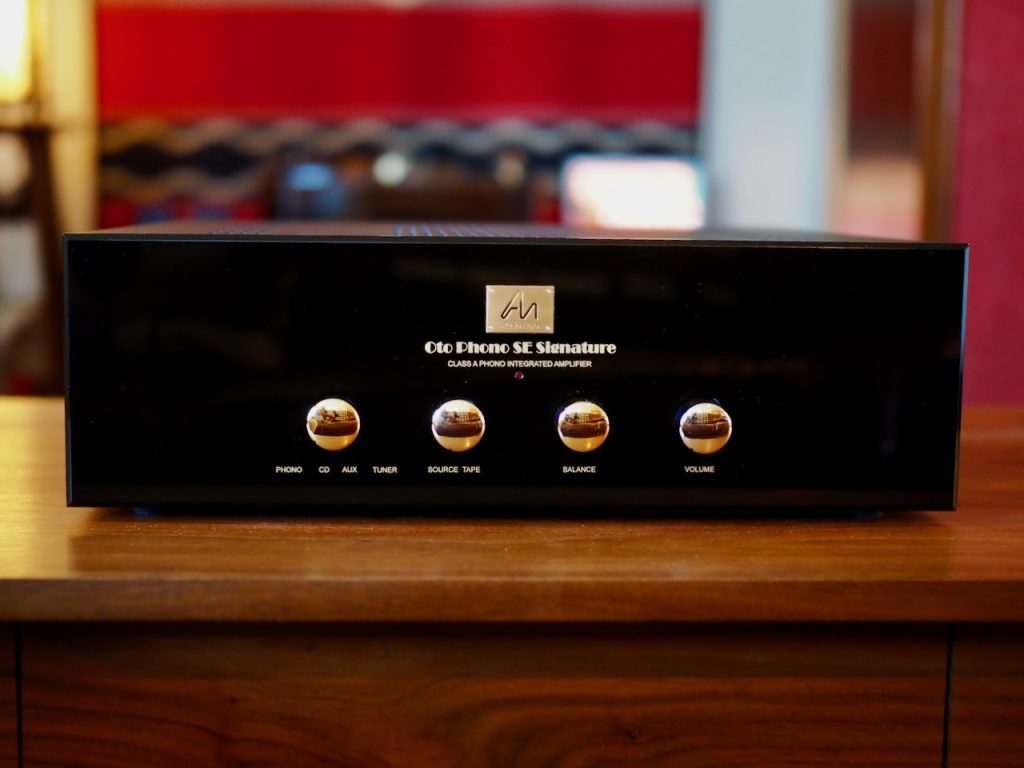
There are four selector knobs that control its operation on the front panel. Left to right, the first knob is for selecting the source (phono, CD, auxiliary, tuner), the second knob is labeled “source / tape” and allows you to switch between the selected source input and the output of a recording device, the third knob is a balance control, and the fourth knob is the volume control.
The “source / tape” feature is probably not something I will use, but I know many of you really value this feature.
For example, while blogging about my real-time impressions of the Audio Note (UK) Oto Phono SE Signature integrated amplifier over time, I got a nice message from mastering engineer - and man of many talents, Steve Hoffman - that said, "I use an Audio Note ((UK)) Ltd Oto Phono SE Signature in my studio. It's amazing, especially for the money, a really nice EL-84 unit that does it all." and "The Oto has everything I need in the studio, phono section, tape/EQ loop, everything."

Around back of the Oto Phono SE Signature – left to right – are the on/off switch, an IEC AC inlet, binding posts for speaker cables (there are binding posts for both 8- and 4-Ohm connections), a chassis ground connection (for source components that have a separate ground terminal), RCA inputs (tape out, tape in, tuner, auxiliary, CD, and phono), and a signal ground connection for the phono stage.
Oto Phono SE Signature Integrated Amplifier Design – Andy Grove
The latest incarnation of Andy Grove’s Oto Phono SE design – the “Signature” – was released in 2016, which incorporated Audio Note (UK)’s most current concepts and components for achieving state-of-art performance.
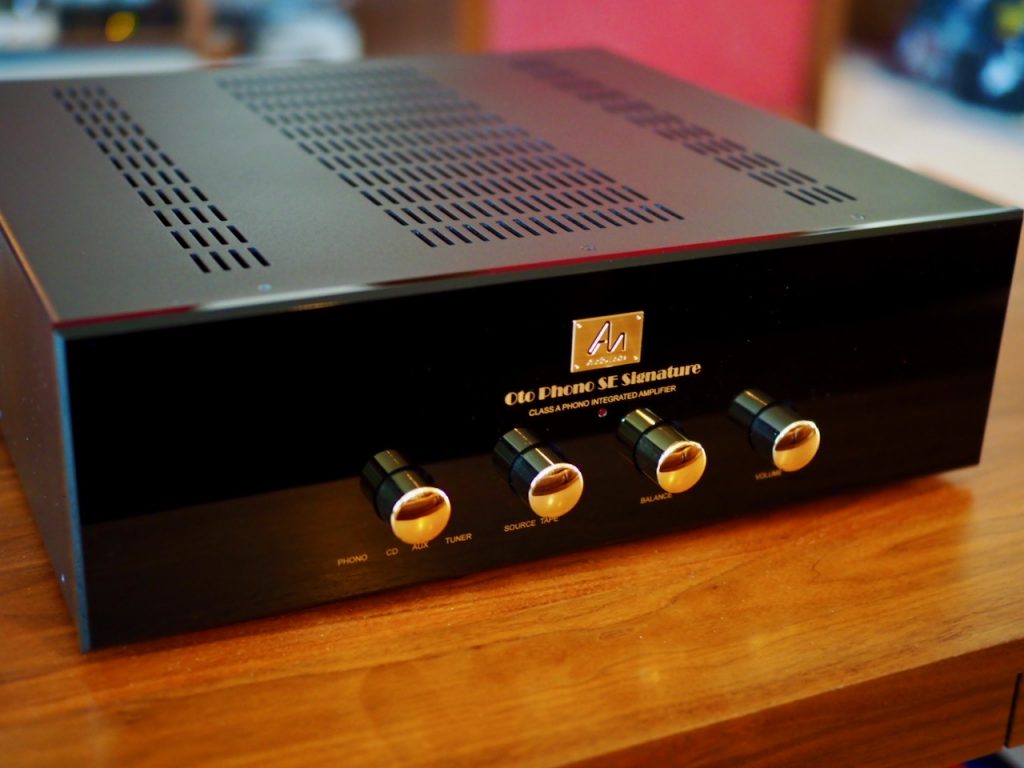
I like Andy, it was a true pleasure to meet him while visiting Audio Note (UK) earlier this year, and as you will read about in a moment, Andy's quite the character!

I asked Andy if he would tell us a little more about his design of the Oto Phono SE Signature integrated amplifier, both in the circuit, the components used, and a little background about the “why” of his choices.
Andy told me, "As I said, the Oto SE was my first properly commercial design, I was 23 at the time, and a bit naive and arrogant with it, not the graceful kung-fu master you see before you nowadays."
"I'd been making audio stuff since I was a young teenager, much to the entertainment of my parents and neighbors. My other passions included getting in fights, heavy metal music, electric guitar, air rifles, pyrotechnics, and hot air balloons that had a habit of catching on fire and crash-landing in inappropriate places, so I was a popular young lad - or so it seemed, given the amount of people who came around asking to see me."
"I met Peter because I'd built a set of 211 amps, and I wanted him to hear them, and then, or shortly afterwards, he asked me to design a single-ended EL84 amplifier - which I did."
"The concept I had was, if possible, to use only a single stage of gain, and then to the output valves. There is one thing you learn quickly, and that's simplicity sounds good, even if the route to get there is complex. Furthermore, with only one gain stage, amplifier stability was more or less guaranteed, and that has a strong effect on how an amplifier sounds as well."
“The Oto was more like something that happened; I looked at various different options, and the ECC83 / 12AX7 to EL84s way of doing it had a golden light shining on it through a crack in the clouds, there was no other choice really, so I can't tell you I meditated for days, or conducted a lot of research. As soon as I drew the schematic I knew it would work."
"The Oto SE, or rather the power amp part of it, was the first (successful) project I did for Peter and Audio Note, roughly 29 years ago now (1991). The formula remained virtually unchanged, with a few tweaks and updates here and there, until, just recently (2016), we created the Signature version of it, which incorporates our most current concepts and components."

"In the Oto SE's engine room are two pairs of EL84 power pentodes, one pair per channel (four pieces in total), in parallel single-ended mode. Each pair is driven by an ECC83 (12AX7) double triode in SRPP (Shunt Regulated Push Pull) configuration in which one triode is the amplifier, and the other an active load. The EL84 power is transferred to the speaker load by a large output transformer, and there is a moderate amount of feedback taken from the secondary to provide adequate damping to the speaker." (in the center of the above photo – Jeff)
The Oto Phono SE Signature integrated amplifier provides 10 watts per channel of parallel singled-ended-pentode EL84 power, making the Oto a true powerhouse of an amplifier with my sensitive Altec loudspeakers.
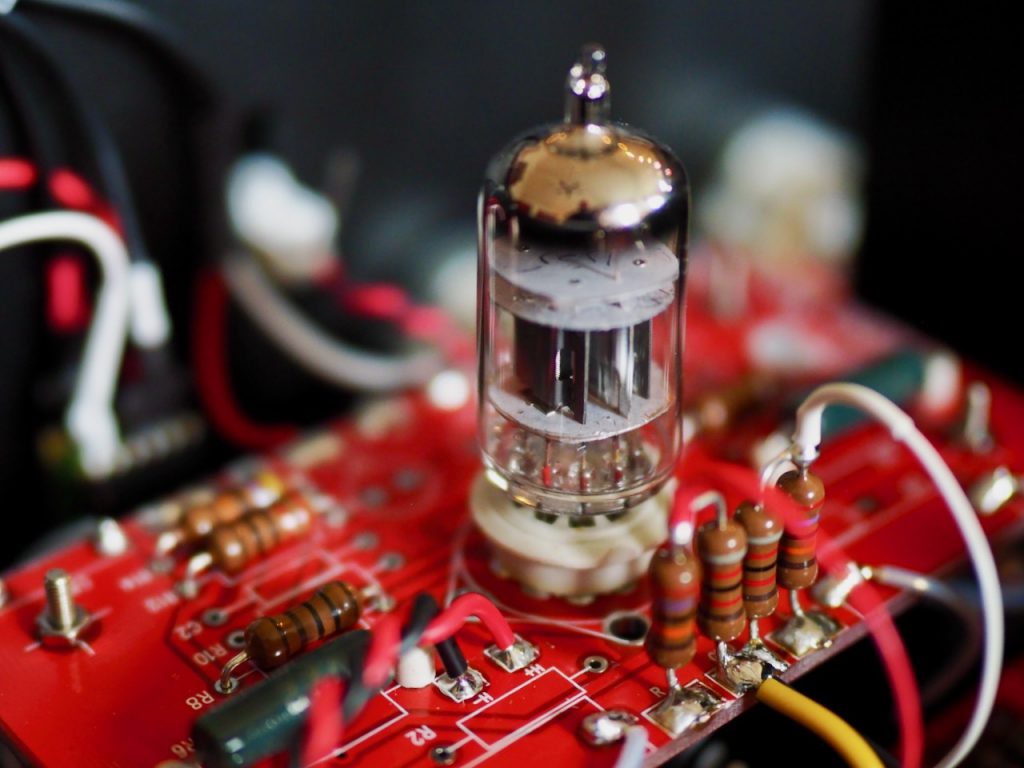
"The phono version has an additional line stage, using an ECC82 (12AU7), and the phono stage itself, which is comprised of an ECC83 and an ECC88 (6DJ8), the phono stage is zero feedback, with a RC passive RIAA EQ network." (line stage in the above photo, phono stage in the below photos – Jeff)
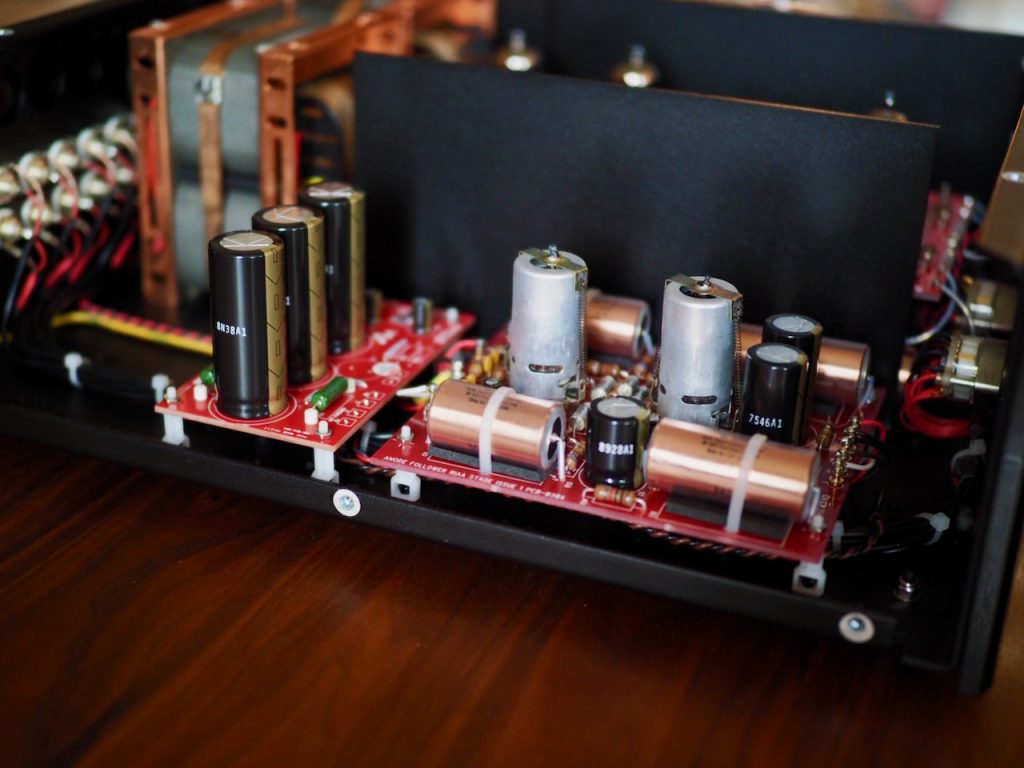
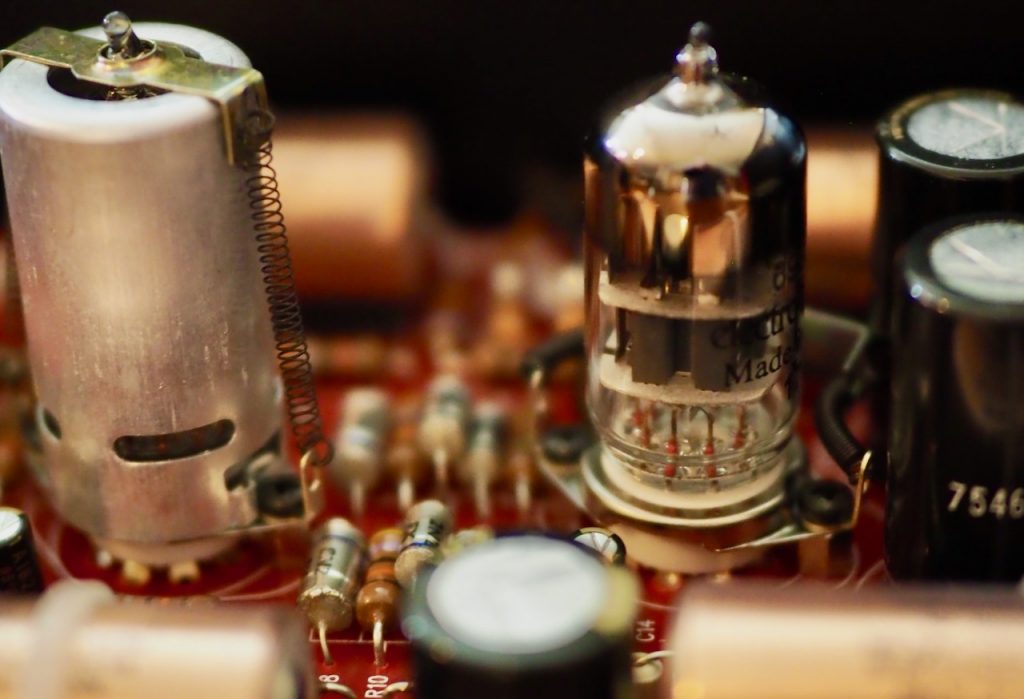
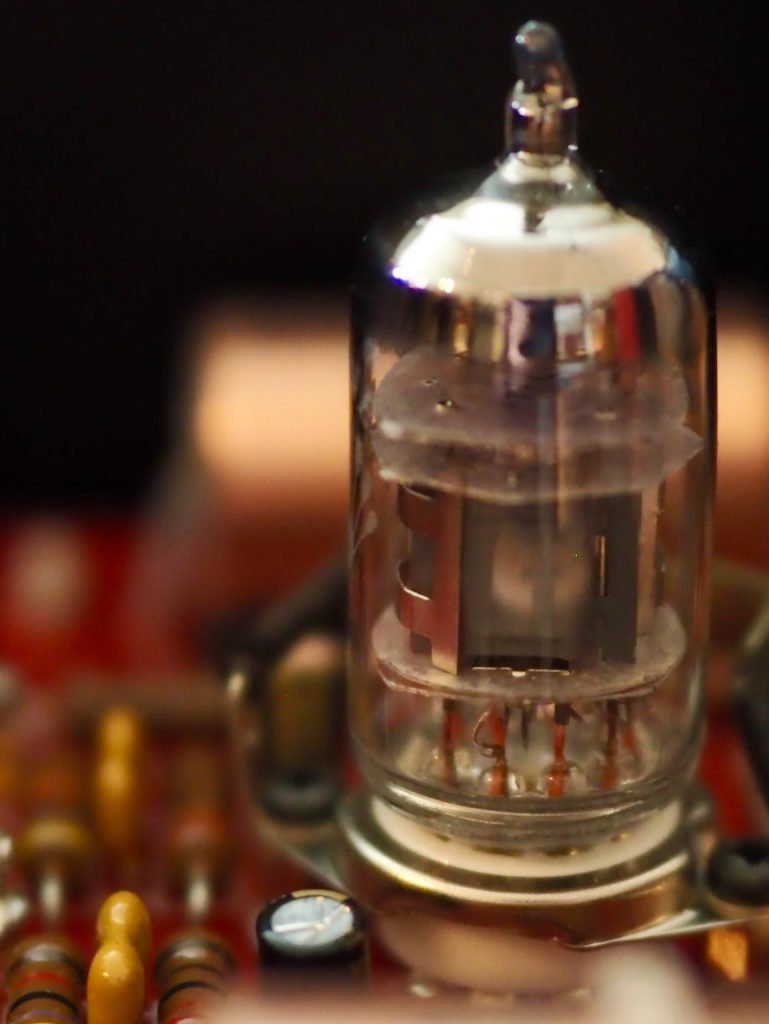
"The power supply is fairly straightforward, with rectification performed by silicon diodes, with conventional RC filtration."
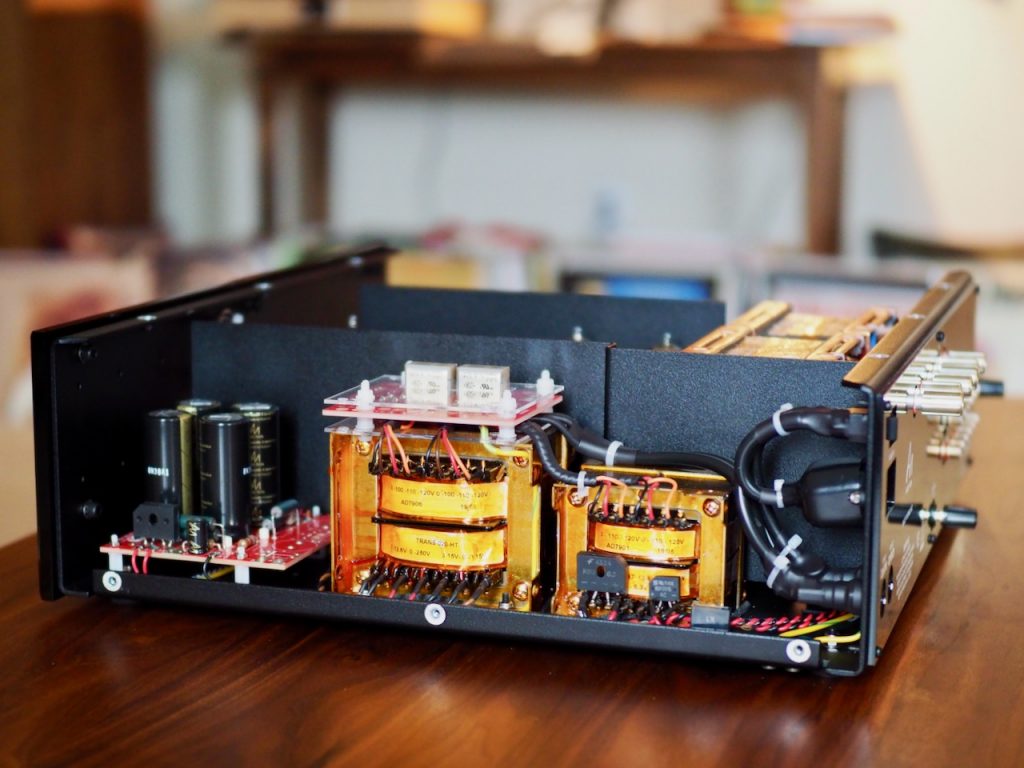
That's the Oto's power supply in the photo above. The transformer on the left is the mains transformer for the amplifier, the one on the right is the dedicated mains transformer for the phono stage.
"The 'plain vanilla' version uses our well-known combination of Beyschlag resistors, Rubycon, BC and similar 'standard' type electrolytic capacitors, ERO mylar coupling capacitors, and the transformers are cored with silicon steel laminations."
"The Signature version is the same architecture, but with a selection of tantalum resistors, Kaisei capacitors, and an output transformer which is cored with HiB silicon steel C-cores and are specially impregnated and coated." (photo below – Jeff)
Many thanks to Andy for a nice description of the Audio Note (UK) Oto Phono SE Signature integrated amplifier.
In addition to what Andy has shared with us, I’d like to delve a little deeper into the transformers, resisters, and capacitors used in the Audio Note (UK) Oto Phono SE Signature integrated amplifier, as they are all built in-house by Audio Note (UK), like the transformers, or custom built to Audio Note (UK)’s specifications by other parties.
On the Audio Note (UK) website page for transformers it says, “The output transformer is, without a doubt, the single most important component in any high-quality valve amplifier. It is impossible to make a truly exceptional amplifier without investing in the best possible output transformer, which in turn must be correctly designed for the circuit and valves being used.”
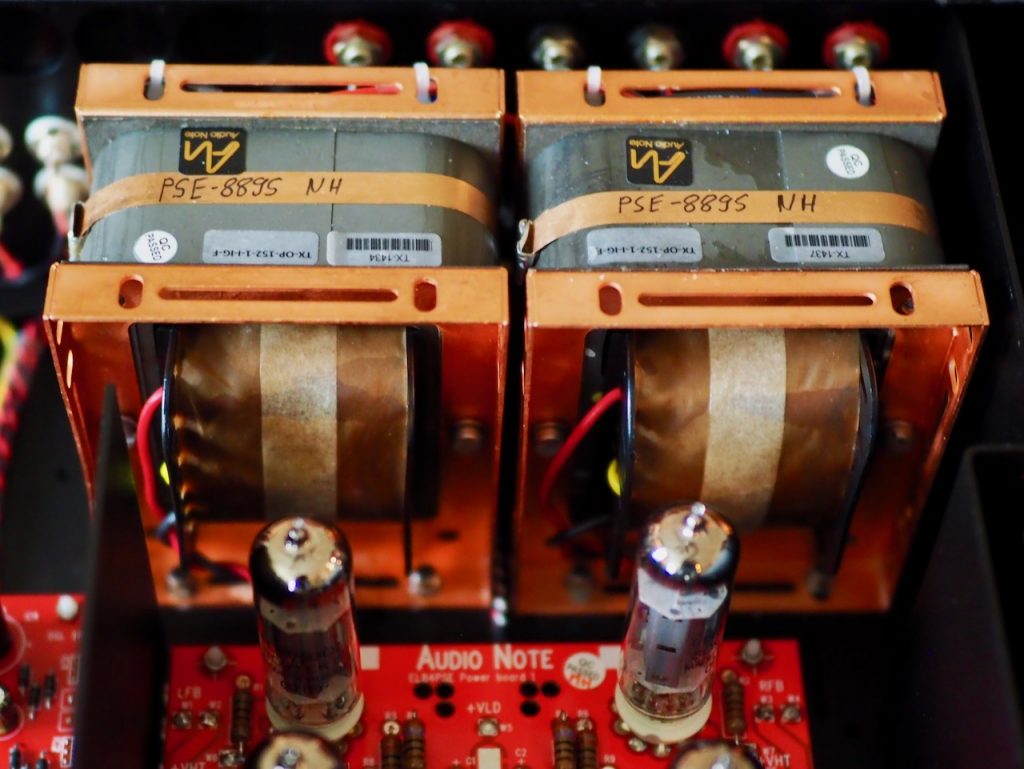
The “Improved HiB” (IHiB) output transformers are used in the Oto Phono SE Signature integrated amplifier, are custom designed and manufactured by Audio Note (UK) specifically for the Oto Phono SE Signature, and “allow the Oto SE Signature to produce impressively extended and controlled bass.”
In case you are not familiar with transformer nomenclature, let me tell you what “HiB” refers to, as you will see it repeated extensively in the Audio Note (UK) white paper on transformers should you choose to read it (HERE).
The National Research Council (U.S.), Committee on Magnetic Materials, National Academies, 1985, report says, “Within the last ten years, improved grades of grain-oriented silicon steel have been introduced by various steelmakers, starting in Japan. These are often referred to by the trade name HiB steel; they have better texture, larger grain size, and lower losses at high working flux densities than conventional oriented steel.”
The above National Academies report was published in 1985, but since then there has been a lot of progress in HiB steel development.
Audio Note (UK) says, in “… collaboration with our suppliers in Sweden/South Korea/Japan/USA we developed from 2009 onwards three greatly improved versions of the standard HiB material that we have been using in our basic C-core transformers since the late 1990s, a material which has also benefitted from our research into heat treatment, so even the basic HiB C-cores are now better than ever!”
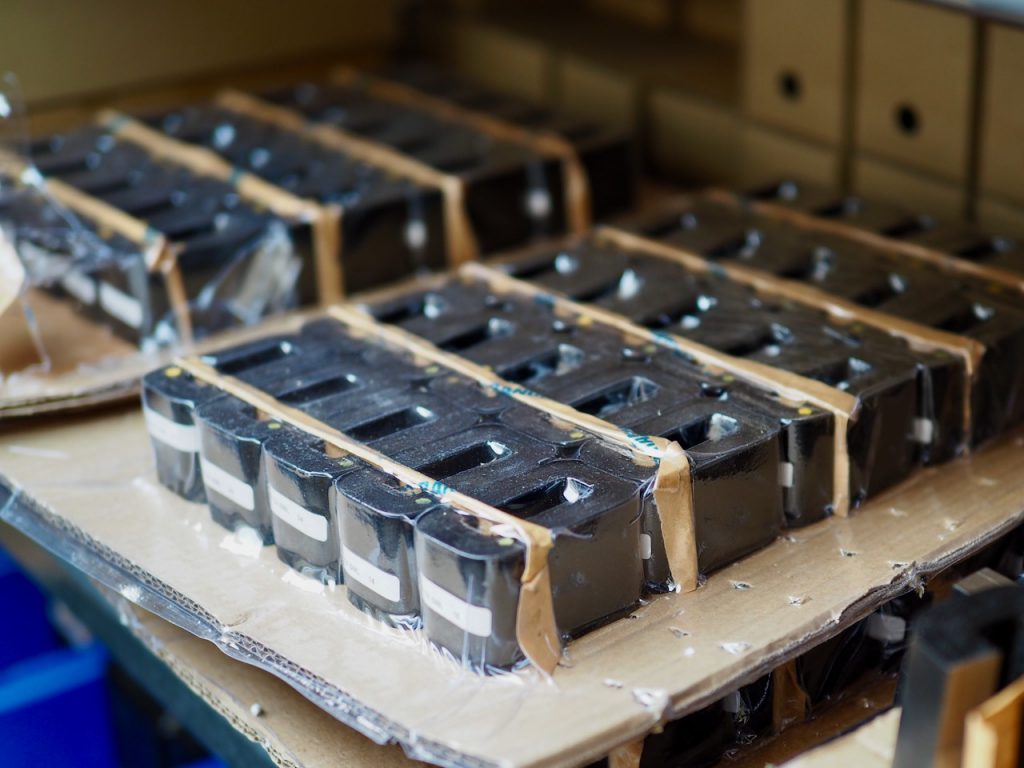
There are three grades of HiB transformer cores that Audio Note (UK) currently uses depending upon the application, the Improved HiB (used in the Oto Phono SE Signature integrated amplifier), the Super HiB, and the Ultra HiB.
In case you are wondering, a “C-core transformer” refers to a transformer that is made on a core that is wound with a single wire, and in the case of the Oto Phono SE Signature integrated amplifier, the transformer core is made from the aforementioned IHiB, and is wound with copper wire.
Audio Note (UK) says, “What is important to point out is that where "normal" core materials are normally judged by their saturation behavior, our C-cores are designed to optimize the low level behavior which is where an audio signal starts, for us it is not all that interesting whether a material is linear well up its magnetization curve, as in our book the way it treats a signal when it starts is far more relevant as this has a direct impact on its low level signal linearity, which in audio is what matters to retain signal integrity.”
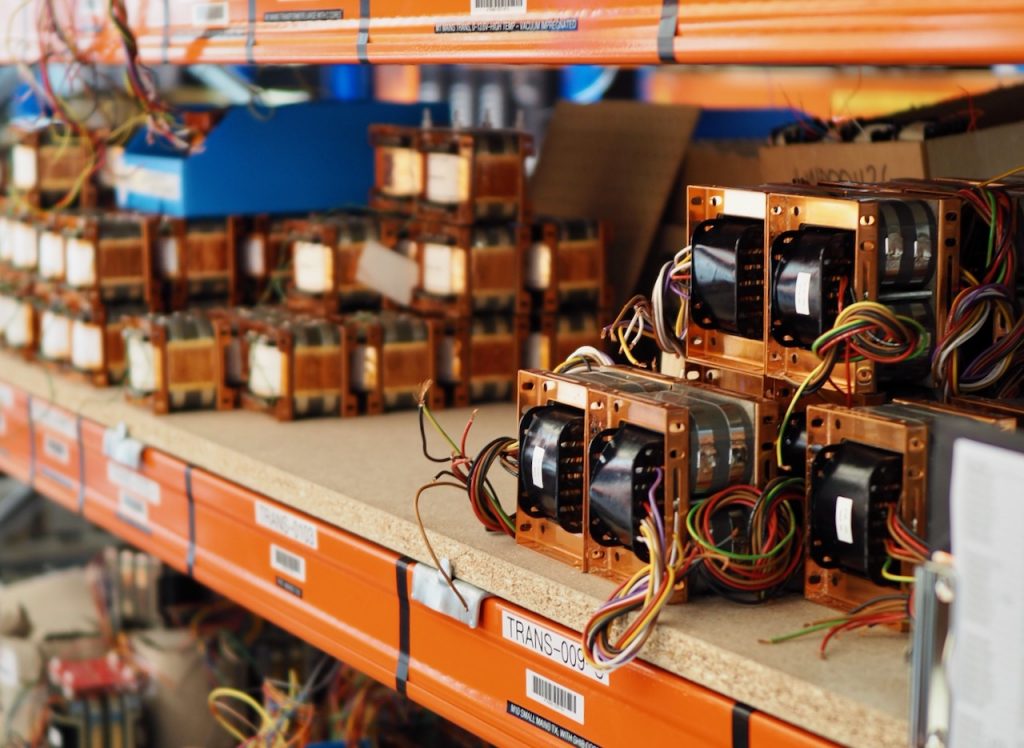
The Audio Note (UK) C-core output transformers all utilize solid copper frames. For single-ended applications the output transformers “… are generally over specified by at least 100% …”.
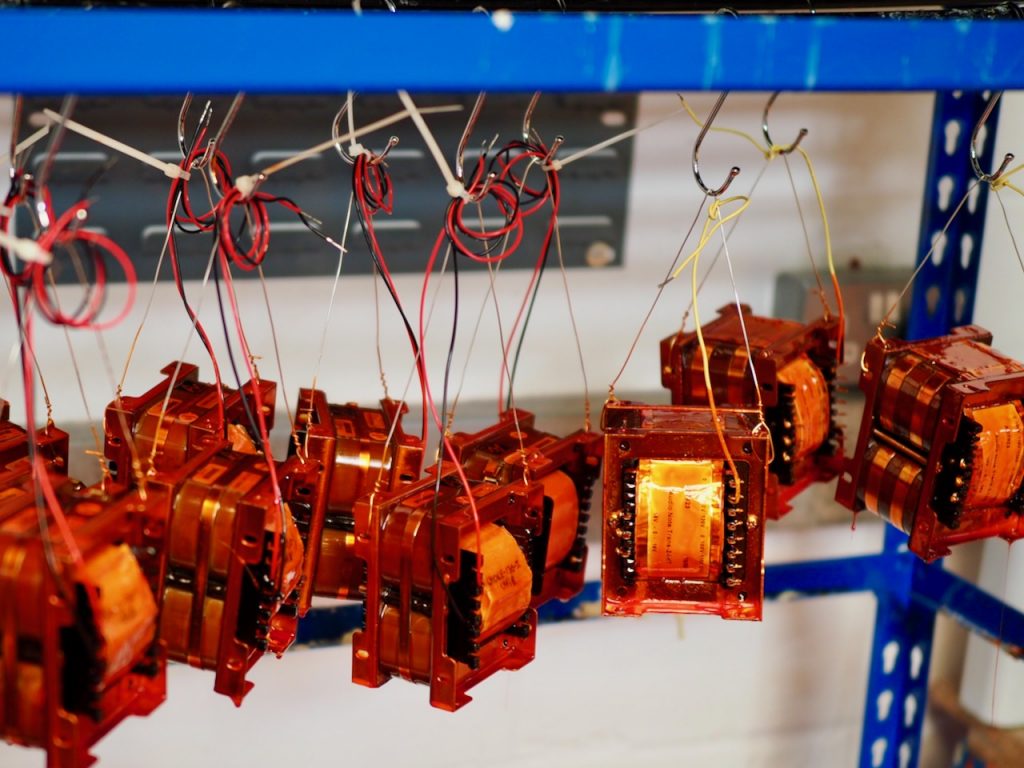
Once the transformers are completed, they are then “… specially impregnated and coated,” as Andy has said.

As an aside, with those massive transformers used in the Oto Phono SE Signature integrated amplifier, it is heavy. The literature says it weighs about 40 pounds, but with its compact size it feels even heavier than that.
On the Audio Note (UK) web page for the Oto Phono SE Signature integrated amplifier it says, “Audio Note (UK) Tantalum resistors used in the most critical areas.”
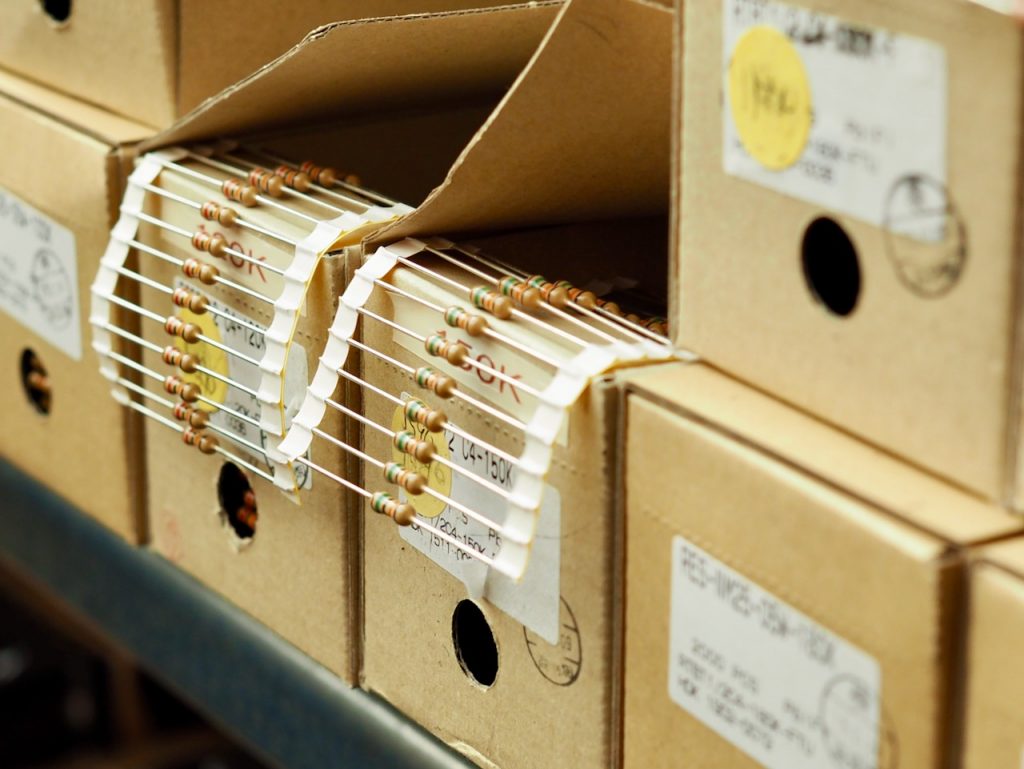
Audio Note (UK) refers to their tantalum resistors as “the Tone King” of resistors, saying, “We at Audio Note (UK) have always been passionate about component quality, and our continuing use of the finest sounding tantalum resistors for our higher-level products is testament to this passion. We have gone to great lengths to ensure a continuing supply of these wonderful, tone-full components, even to extent of convincing the manufacturer to continue production, purely to supply our requirements.”
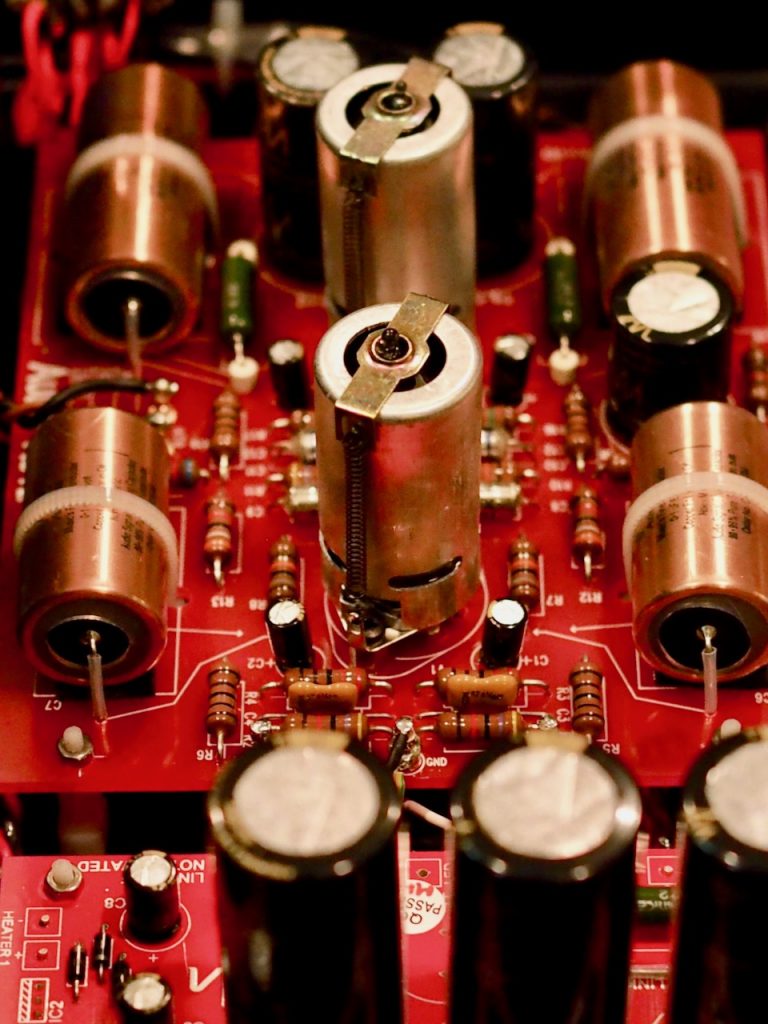
On the Audio Note (UK) web page for the Oto Phono SE Signature integrated amplifier it says, “Audio Note (UK) Copper foil capacitors used in the most critical areas.”
Audio Note (UK) now makes their own copper foil signal capacitors. The Audio Note (UK) copper foil capacitors are a mylar in oil design that are encased in copper.
As Andy alluded to in his description of the Oto Phono SE Signature integrated amplifier, KAISE electrolytic capacitors are also used in the design, and the KAISEI electrolytic capacitors are a near copy of the highly regarded Rubycon Black Gate capacitors.
On the Audio Note (UK) website it says about the KAISEI, “… use all of the same materials as these supreme components (the same special electrolyte, foil and construction quality) apart from the hyper expensive and extremely difficult to produce Graphite impregnated paper, so the only difference between the KAISEI capacitors and the forthcoming Black Gate replacements is that the paper is not graphite impregnated in the KAISEI, otherwise they are the same.”
Audio Note (UK) Research & Development – Andy Grove
While visiting Audio Note (UK) I had told Andy that in my day job as a physical scientist (now retired), I reviewed and oversaw research projects and programs for the USA’s Office of Science National Laboratories.
Many fundamental science research projects were structured to include three research components: collecting experimental data for a given research project, comparing the collected data to data that theory would predict for the research project, and the use of supercomputers for computational modeling and data intensive computing to gain new insights on how the experimental data and theoretical data might relate.
The coupling of experimental research, theory, and computational methods provides scientists a powerful way of advancing the sciences to meet the needs of today’s world.
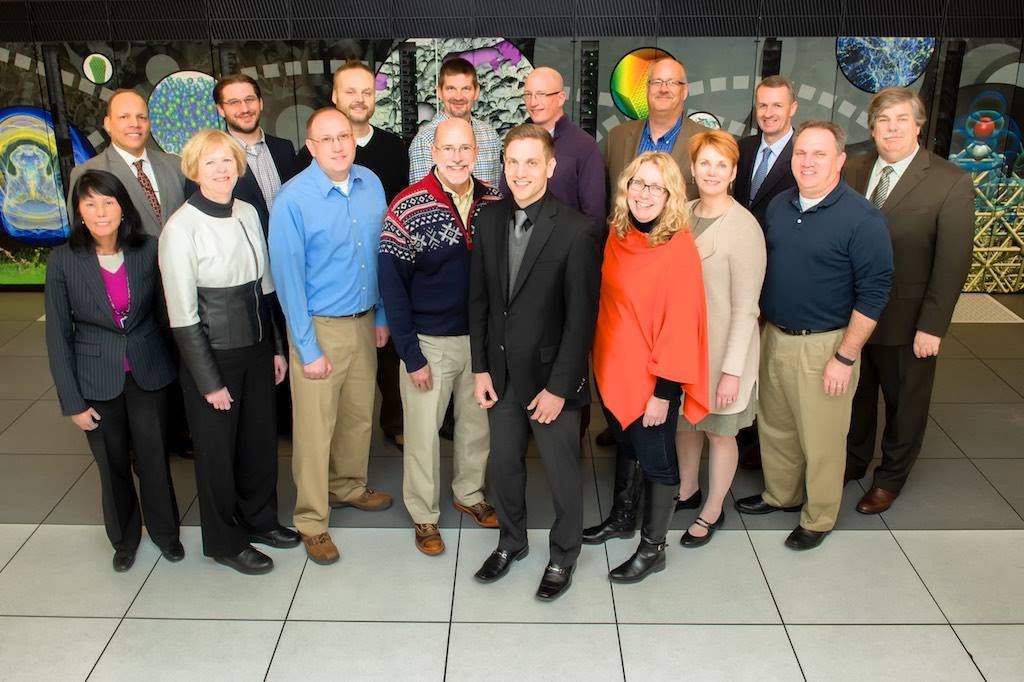
In the photo above, you can see me as part of a review committee for an annual review at the Argonne Leadership Computing Facility some years back. There's a lot of exciting and important science that is enabled by cutting edge supercomputing capabilities. In the photo we were standing in front of Mira, a 10-petaflops IBM Blue Gene/Q system, which at the time was considered a leadership class machine.
I knew from conversations with Andy that he takes his research & development activities just as seriously as any scientist in a national laboratory does, and I asked Andy if he would be willing to share with us a little more about his thoughts on research & development in audio.

Here’s what Andy told me:
“There are those research & development topics that (1) fit the accepted audio theoretical or scientific framework, (2) or are theoretically or scientifically plausible, but which aren’t easily substantiated, (3) or those things that work to make an audible difference, but we have little or no idea why, and (4) those things that are utter nonsense (which I’ll talk about at some other time).
Reformulating, we can see that 1, 2 and 3 aren't strictly exclusive, and, in general, are something like three nested sets:
C is the set of that which fully fits the accepted framework.
P is the set of that which works, and does so within the realms of accepted theory, even if substantiation is difficult or impossible.
W is the set of that which works or makes an audible difference, even if we don't know how.
C is a subset of P is a subset of W.
C ⊂ P ⊂ W
Much of conventional audio engineering and its measurement regime, exists within set C, even though we aren't exactly sure about how to interpret these measurements in relation to their impact on the listening experience. It's more a case of trusting that a change in the magnitude (more or less) of some parameter will result in better reproduction. Of course, 'standard' audio measurements are extremely important, so audio tends to be an expensive hobby by way of test equipment.
However, let's perform a semi-scientific thought experiment: Take two identical guitars, one fitted with bronze strings, the other steel (or go finer grained, and use pure nickel vs steel). The experiment is to take measurements, double blind, and using only a continuous sine stimulus and an audio test instrument. After the fact, the experimenter, who is a non-musician so as not to cause bias, must define the differences between the two guitars, how they are relevant to the guitar's tone, and why a musician may choose one over the other.
You can imagine it would be difficult, if not impossible, for our experimenter to define what's going on, especially as a non-musician, and, he may well conclude that there is no appreciable difference between the two guitars: They are both tuned to the same intonation, therefore they must sound the same, because (dogma says) the human ear cannot detect such subtle differences.
Unfortunately, we live in a society which is verging on fundamental materialism, and, from that, stems the sentiment that information is more valid if it is arrived at by an axiomatic, sequential process. Of course, let's not forget that science, and the scientific method have brought humans many benefits. However, what I am leading to here is the formation of a 'mental policy' from a high-school level of understanding of the subject in question, often not actually gained in high-school, but simply acquired as second hand, perceived wisdom.
Therefore, our skilled experimenter, not being a musician, is very likely to conclude there is no difference between the two guitars, because he or she has no experience when it comes to understanding that subtleties might be important. Those laymen reading the test report will most likely extrapolate that this means no-one can tell any difference between the guitars, and, unfortunately, further postulate that to claim any difference is delusional.
I guess we can sleep sound in our beds that there is always music out there which is played on second-rate instruments, so no need to feel a sense of being ripped off by deluded musicians playing Martin guitars, Stradivarius violins, or such preposterous machines as Bosendorfer or Fazioli pianos. Waiter, take this old wine away and get me some new stuff immediately!
Yet, luckily for us, it's rarely called into question that a musician can tell the difference between two different types, or even brands of strings, because it is deemed feasible that he or she may be able to hear a difference, due to, for example, a difference in material density and/or Young's modulus. This is what I mean by set P.
Set W, the superset, is much more difficult to define with any kind of technical language, because it contains elements of 'I don't fully understand why or how it works, but it does, and it doesn't hurt anything else, so I use it.' It's pretty normal, arriving at useful information empirically. We are humans, with a limited time here, and it's impossible, and undesirable, to rigorously justify everything we do, especially when it's to do with the enjoyment of music, rather than analyzing it.
As I mentioned above, such information arrived at empirically, by inspiration, or simply by fumbling around in the dark, is regarded as being less valid, which is incorrect; truth is truth regardless of the path trodden to obtain it. And, it's interesting to note that we are talking about information here which is gained first-hand, while those criticizing it are often observing a kind of faith, quoting from what may as well be a religious text as far as their own depth of actual experience with the subject really is.
I would like to mention here that those actually involved in science and mathematics know that plain inspiration plays a very big part in both problem solving and discovery; the idea comes first, and the proof of it afterwards. Furthermore, our accepted theory of the world relies on mathematical shims such as Renormalization and Perturbation Theory to work, it’s not all neat formulae and spotless lab coats like a 1950s Sci-Fi movie.
Looking at this from a different perspective; we are all familiar with waiting in a railway station for a loved one to arrive. Over the din, first you hear their footsteps, then their voice as they call out to you. Our ear/brain system not only separates some complex waveforms from a crazy 3D sound field, but meaning from it too. We can hear our friend is wearing a new pair of shoes, and sounds a bit pissed at you arriving late for the pickup.
Studying that sound-field on a scope or FFT will tell you very little, and will certainly reveal nothing of actual meaning, not in a human sense.
What I am waving my hands at here is, although subject to subjectivity, the ear/brain system is incredibly sensitive and has incredible resolving power of complex sound fields, like an orchestra in a concert hall. And, it seems very likely that even our best test equipment isn't capable of resolving everything that is happening in an audio device, or, at least we don't have a method of displaying resolved information visually in a such a way that we can sensibly interpret or understand it.
This situation is a little strange because it's well appreciated that, even though our eyes aren't really all that good optically, we can recognize a face in a crowd and drive a car, and, there is considerable research taking place in these areas. Our sense of taste and smell is another interesting area of perception, especially as combinations of chemicals can evoke the image of a fruit, or a place or person from the distant past, yet, we are to believe that an FFT of a 1kHz sine wave is all we need to know about the entire audio chain, from the consciousness of the musician to that of the listener?
What's particularly disappointing is the fundamentalist vehemence with which some people feel the need to attack the type of research & development we do. Audio is a sizable industry, and there are many very clever people working within it, as well spending money on finished products and components for home builds of recording, reproduction, and instrument electronics.
It seems like in high-performance audio we've been on the receiving end of flak, ridicule and insults for too long. The reality is that when doing research & development in audio to advance the state of the audio arts it is necessary to investigate all those things that are important to understanding what is going on from both theoretical and subjective perspectives.
We must investigate those things that fall into the accepted audio theoretical or scientific framework, those things that are theoretically or scientifically plausible, but which aren’t easily substantiated, and those things that work to make an audible difference, but we have little or no idea why. That’s all necessary in order to advance the state of art in music reproduction.”
Many thanks to Andy Grove for explaining his philosophy and methods for doing research & development for audio.
While discussing research & development at Audio Note (UK) with Andy, I was impressed with the level of rigor and discipline employed, which was truly representative of the same sort of level of rigor in research & development that you see in the USA’s cutting-edge National Laboratories, like for example, with the first-of-its-kind imaging Time-Of-Propagation counter (iTOP) that the project team I was the Federal Project Director for built and installed into the Belle II detector at the SuperKEKB accelerator complex at KEK in Japan.
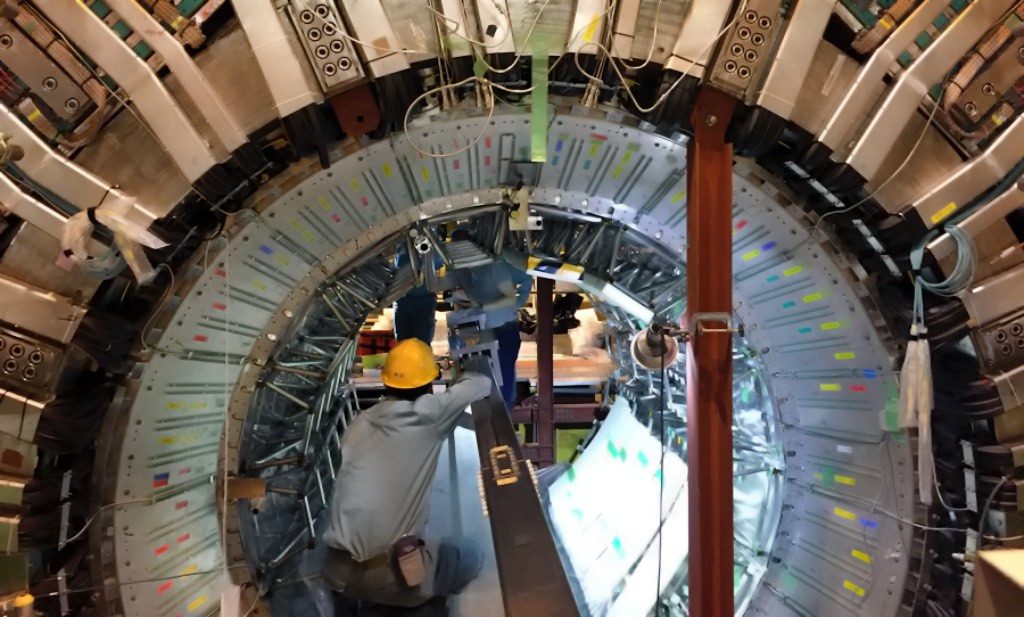
Andy collects experimental data from measurements and listening trials, evaluates how it fits in with accepted theory, and also uses computational modeling to gain a greater understanding as to what is occurring, just as a scientist in a USA National Laboratory would do.
However, in Andy’s research & development, there’s an additional highly specialized supercomputer he uses to validate results, that of the human brain and auditory system.
Long time readers of mine know of my interest in research into the neurobiology of music, a field that is growing, and revealing fascinating insights into what aspects of musicality and sonics are key to the reproduction of music in the home (you can read more on this topic HERE).
I think it is impressive how Andy and his Audio Note (UK) colleagues go about doing research & development to advance the audio arts.
Oto Phono SE Signature Integrated Amplifier – Amy Tweed’s Amplifier Build!
One of the things that I observed - and very much appreciated - about Audio Note (UK) while I was visiting was that it is very much a family-oriented business, with Peter Qvortrup, Lesley Fennell (Peter's wife), Emily Qvortrup (Peter's eldest daughter), and Daniel Qvortrup (Peter's son) all being involved in the day-to-day business activities.
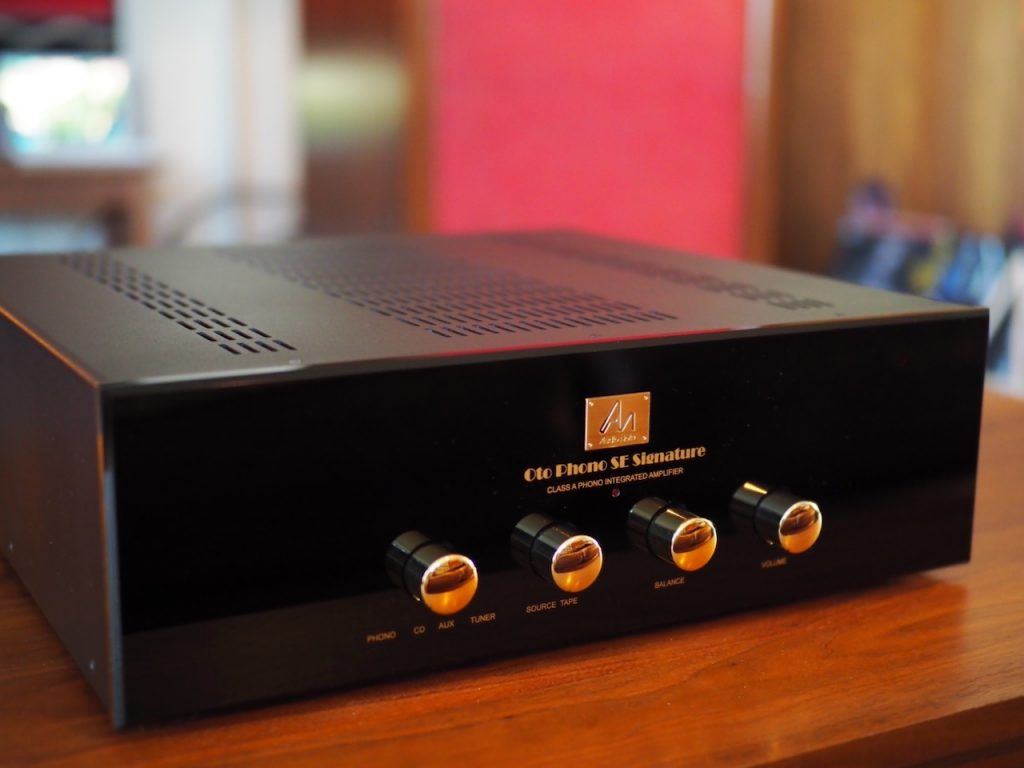
Not only is Peter's family heavily involved in Audio Note (UK), but that same family-like atmosphere permeates through the staff as well. I was impressed to note as I walked around Audio Note UK headquarters how happy people were while doing their work, and how gracious and thoughtful they were towards each other, and it was obvious to me that they care about each other.
The staff of Audio Note (UK) reminded me of being more like an extended family than employees who just come in and then go home after a day's work.

Take for example, Amy Tweed (above), the engineer who assembled the beautiful Oto Phono SE Signature Integrated Amplifier you see in the accompanying photos.
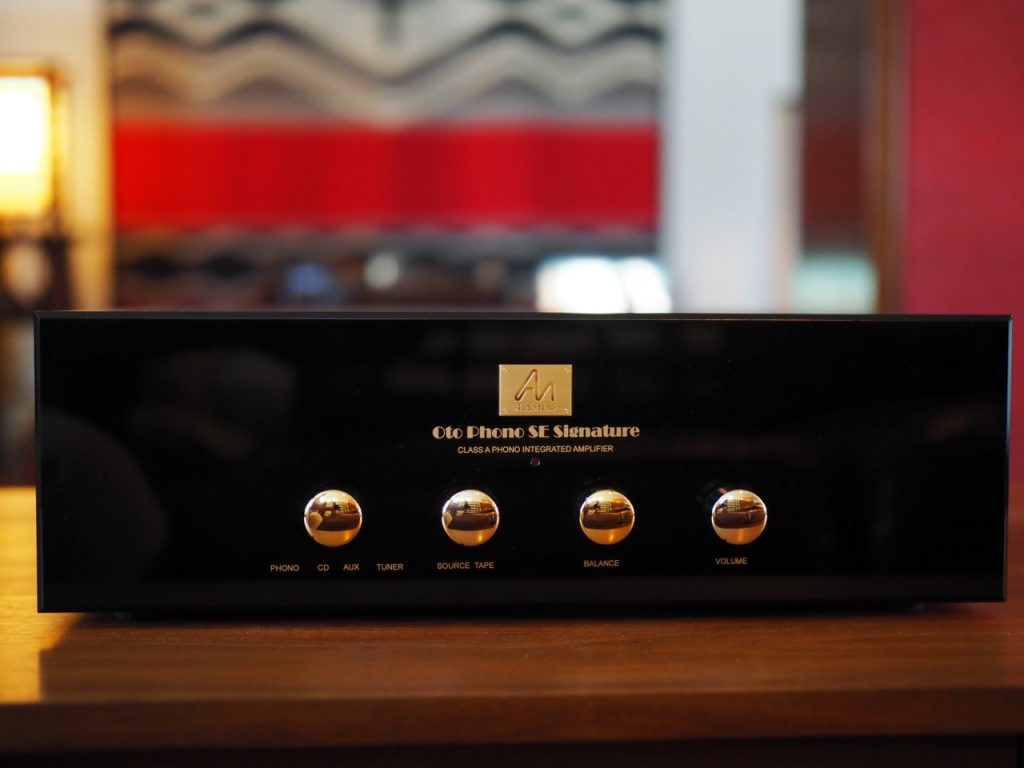
"Amy has been with Audio Note UK for years", her colleague Micky Seaton told me, who made it a point to tell me what a fine assembly engineer Amy is, "Amy is at the forefront of build and quality, she knows how to build components that create beautiful music", as well as how Amy took it upon herself to make the best possible version of the Oto Phono SE Signature Integrated Amplifier for yours truly.
I'm impressed that Micky made it a point to tell me about Amy (Micky and Amy are in the photo below), and I'm impressed with Amy's level of expertise, care, and consideration in building the Audio Note (UK) Oto Phono SE Signature integrated amplifier for me to write about for all of you. It makes me feel cared for too, and Amy's amplifier build is a work of art!
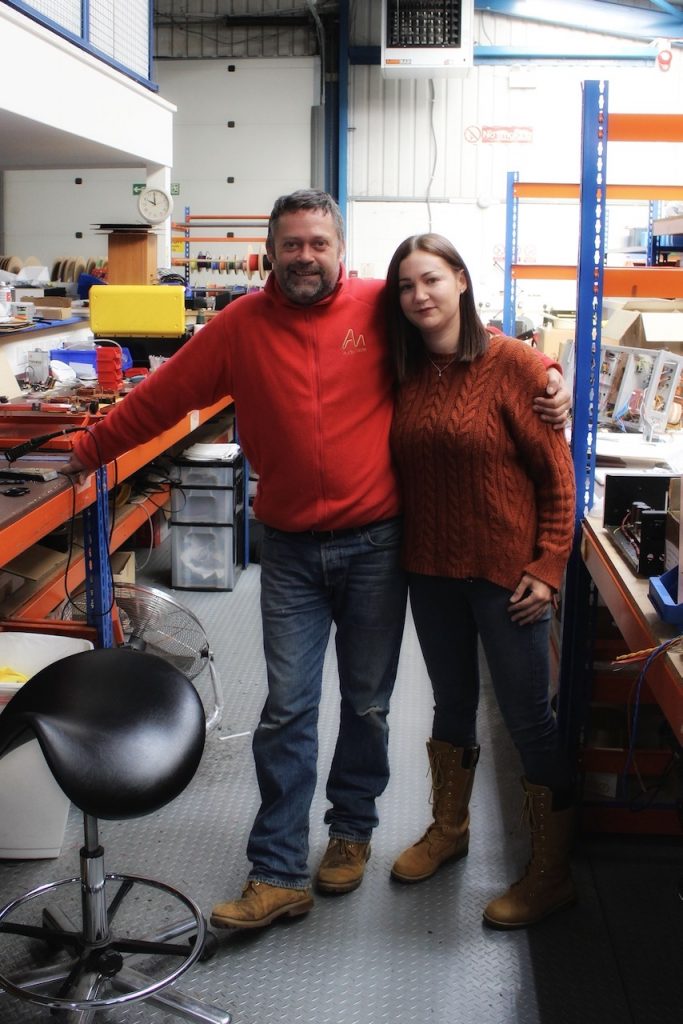
You rarely see that kind of dedication and care in today's world, and it impresses me, and that's why this section of this article is titled "Oto Phono SE Signature Integrated Amplifier – Amy’s Amplifier!”
That's my way of saying, "Thank you, Amy, I appreciate you, your talent and knowledge, your care and dedication, and your fine craftsmanship in creating this Audio Note (UK) Oto Phono SE Signature integrated amplifier just for me."
I might add that when you place an order for any product from Audio Note (UK), each product is built just for you after you order it, and that same dedication, skills, and tender loving care that Amy put into building the Audio Note (UK) Oto Phono SE Signature integrated amplifier for me, goes into each and every Audio Note (UK) product they build for you. I find that to be very impressive and refreshing indeed!
The Review System
Initially I installed the Audio Note UK Oto Phono SE Signature integrated amplifier into my vintage Altec 832A Corona loudspeakers based system – more HERE – to get some run-in time accumulated on it while finishing up another feature article for Positive Feedback.

After run-in was nearly complete I installed the Audio Note UK Oto Phono SE Signature integrated amplifier into my vintage “Stokowski” Altec loudspeakers-based system.
In the above photo you can see the Acoustic Revive RAF-48H Air Floating Board isolation device that the Oto was placed upon for the review.
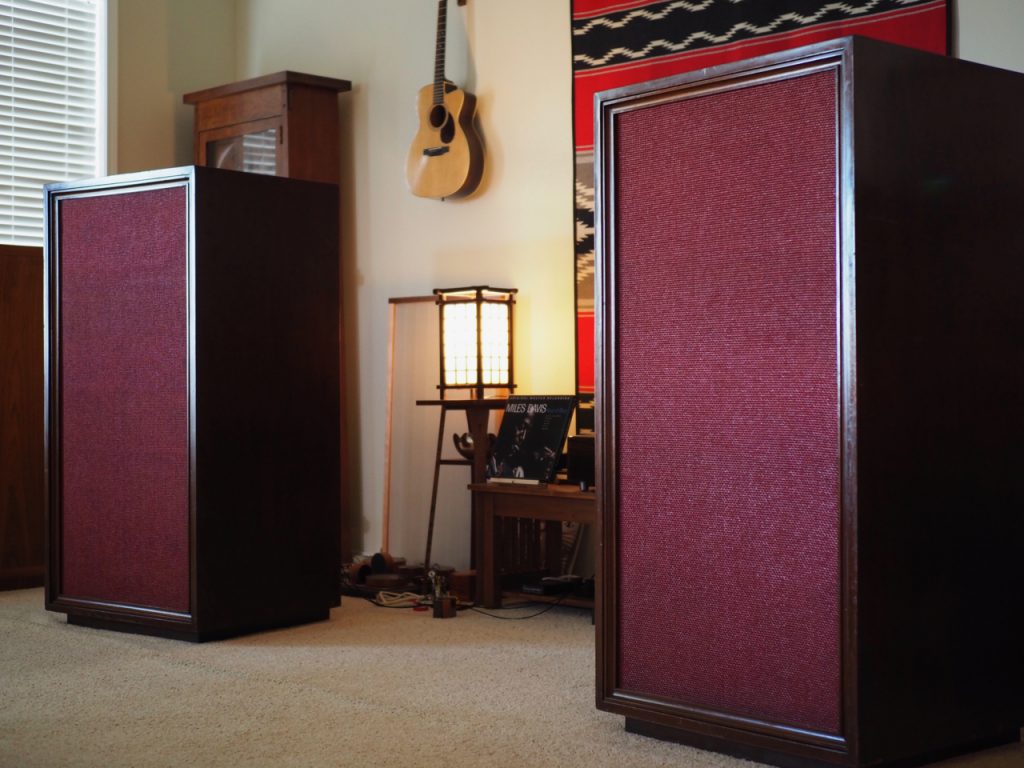
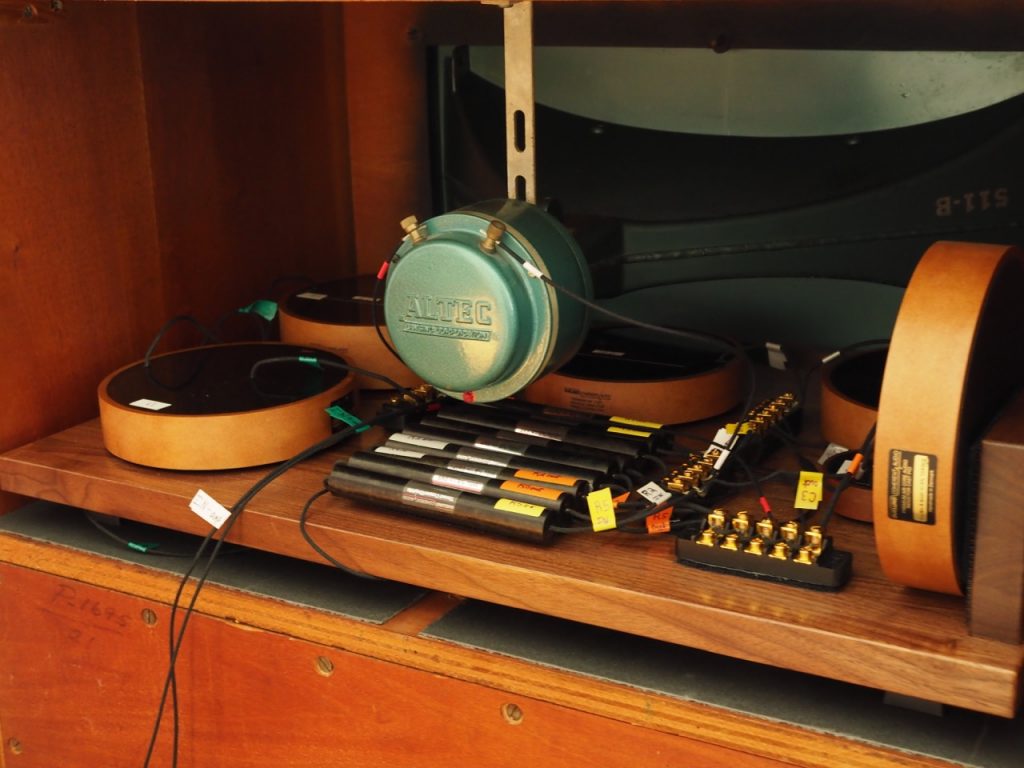
The “Stokowski” Altec’s were custom built for conductor Leopold Stokowski in the early 1960s, and Frederik Carøe (Duelund Coherent Audio) and I teamed to build state-of-art Duelund CAST tinned-copper crossovers for them that I described in the Positive Feedback feature article "The Duelund-Altec Project – Dare to Dream!" (which you can read HERE).
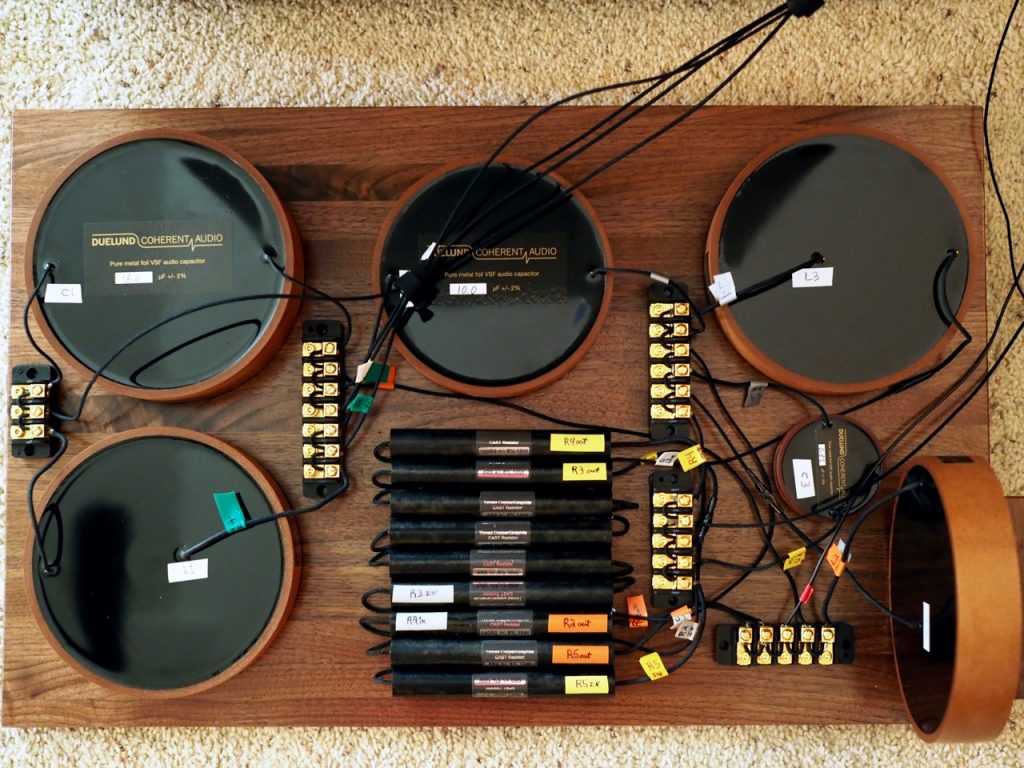
The “Stokowski” Altec’s with their Duelund CAST tinned-copper crossovers are the highest performing loudspeakers I have ever encountered for what I value in the reproduction of music, and they seem to get the very best performance out of every amplification component I have tried with them, and their high-sensitivity makes them a perfect match to the Oto Phono SE Signature integrated amplifier's 10 watts of power.

Speaker cables from the “Stokowski” Altec’s to the Audio Note UK Oto Phono SE Signature integrated amplifier were the Duelund DCA16GA tinned-copper cables with a baked oil-soaked cotton dielectric. Wire ends for the speaker cables were unterminated, because I think they sound better that way.
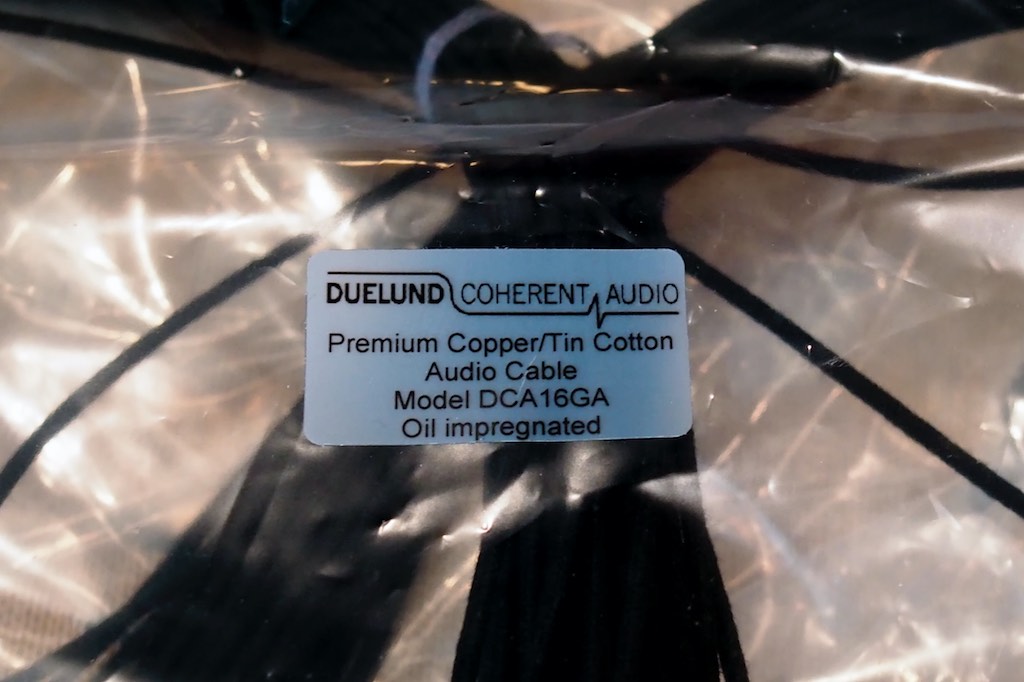
An Acoustic Revive “Absolute” power cable connected the Audio Note UK Oto Phono SE Signature integrated amplifier to an Acoustic Revive RPT-6 Absolute NCF Power Distributor, which in turned was connected to wall AC with another Acoustic Revive “Absolute” power cable.
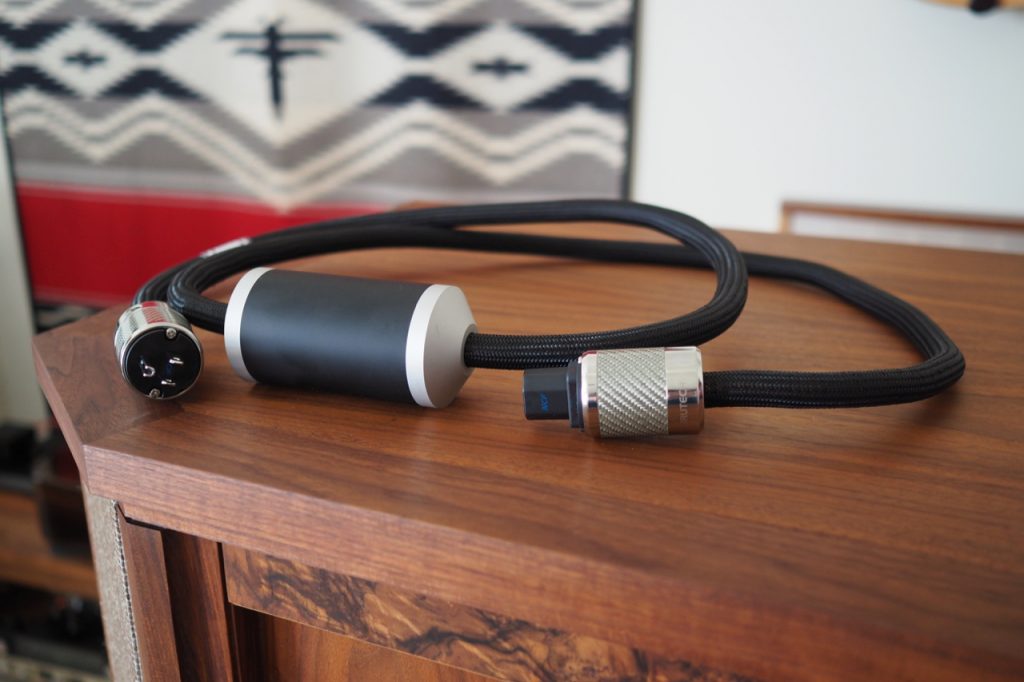
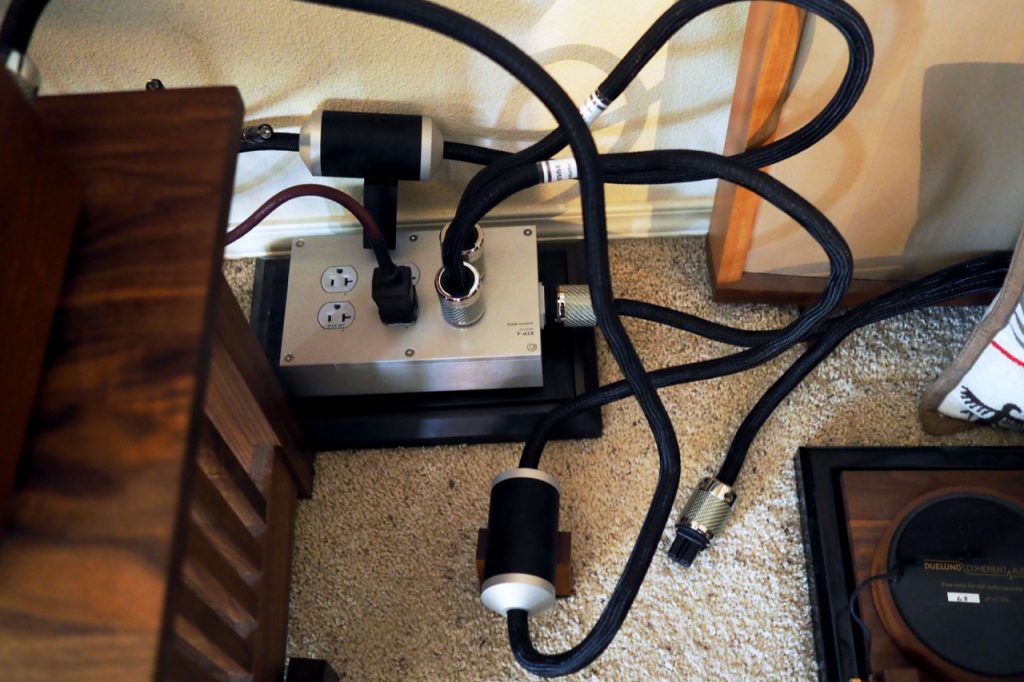
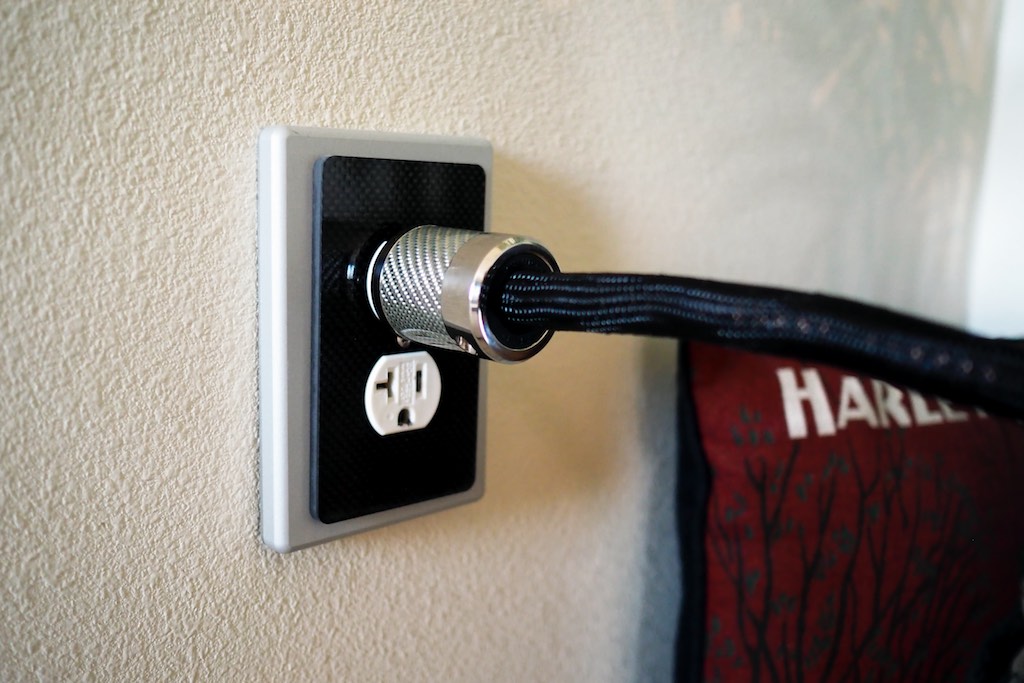
The wall outlets used in this review system were fitted with Acoustic Revive customized Oyaide R-1 outlets, Acoustic Revive CB-1DB Receptacle Base Plates, and CFRP-1F Carbon Fiber Outlet Plates.
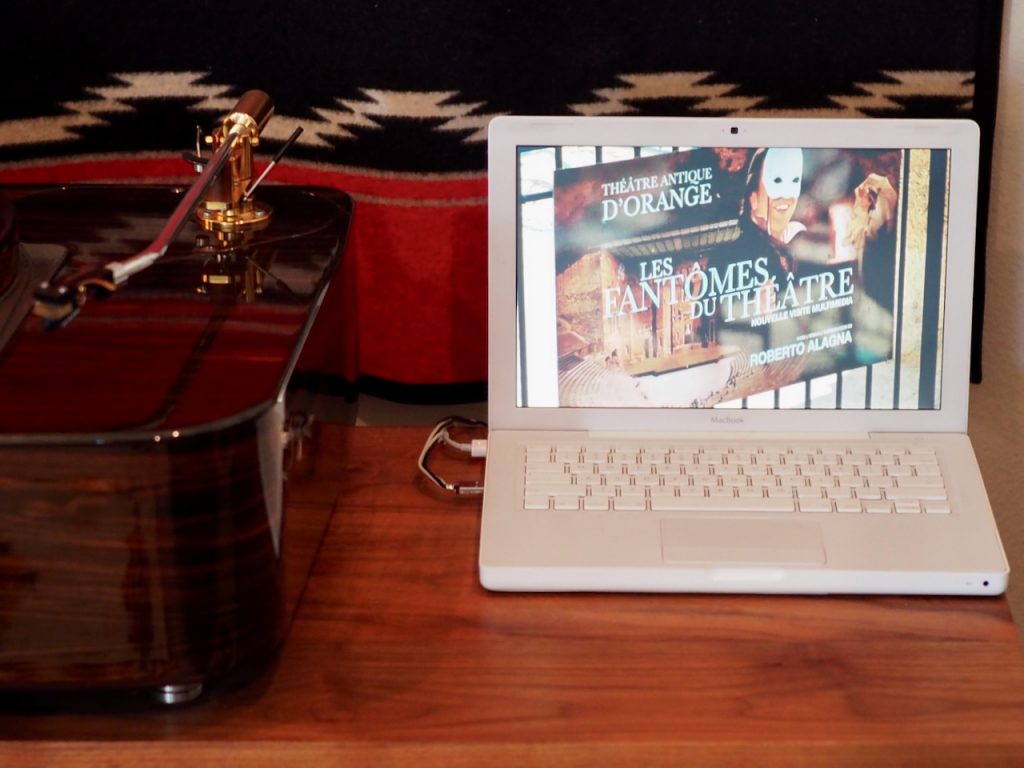
For a digital source I used my MacBook computer to stream Jazz 24 via my DIY Art of Tone 22GA tinned-copper pushback wire USB interconnect to an Mhdt Lab “Havana” USB DAC.
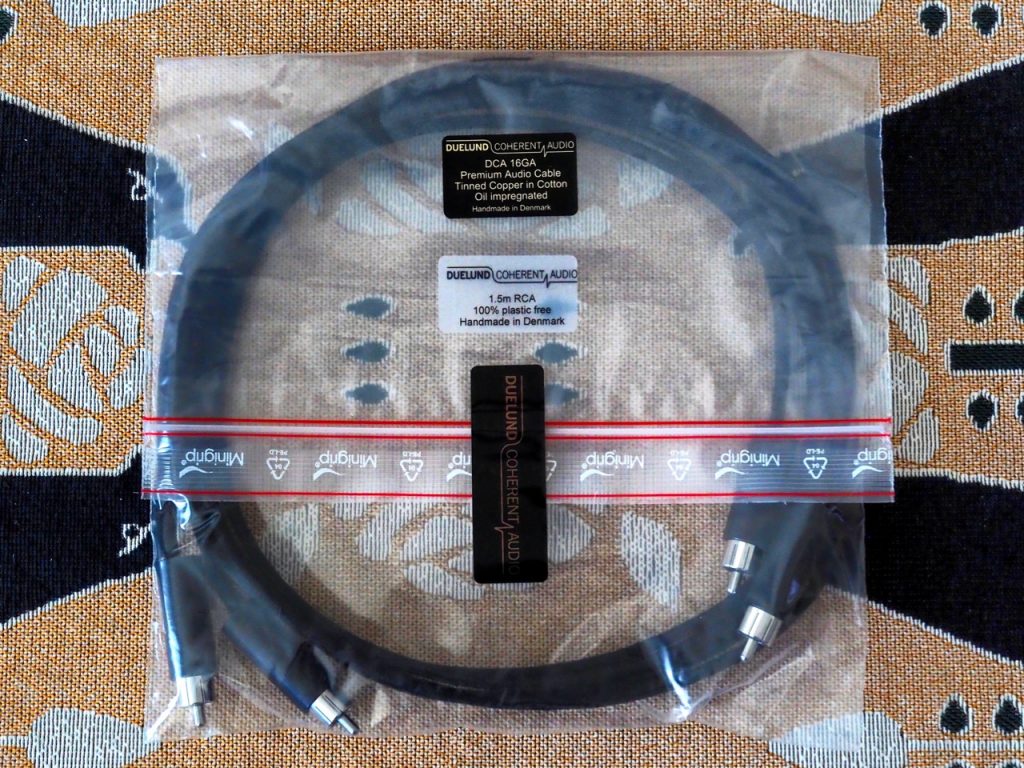
The Havana was connected to the Acoustic Revive RPT-6 Absolute NCF Power Distributor with an Acoustic Revive Power Reference TripleC NCF AC power cable, and connected to the Oto Phono SE Signature with the superb new Duelund plastic-free RCA DCA16GA tinned-copper interconnects.
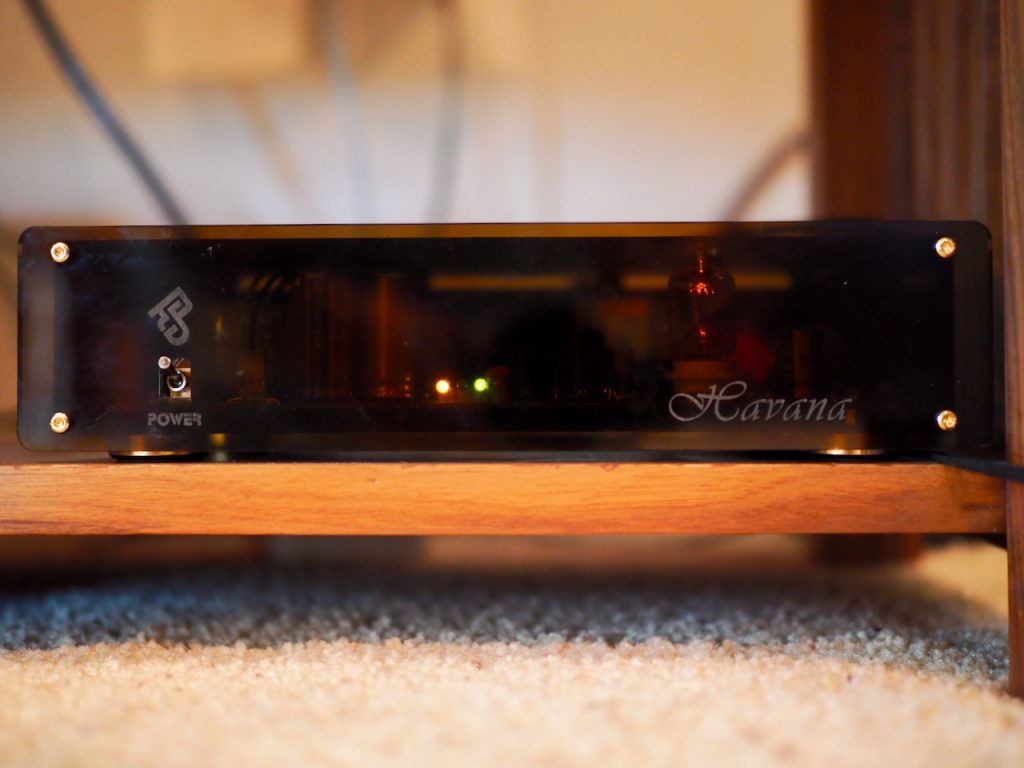
For an analog source I used my Classic Turntable Company hot-rodded Garrard 301 turntable in an Artisan Fidelity plinth (photo below), with a SPEC AP-UD1 Analog Disc Sheet turntable mat, a Peter Riggle Audio Engineering Woody SPU tonearm equipped with - what else - an Ortofon SPU Classic GM MkII stereo phono cartridge, stepped-up with an Intact Audio SUT that compliments the Ortofon SPU Classic GM MkII, and a Thomas Schick tonearm equipped with a Soundsmith Zephyr Mk III phono cartridge.
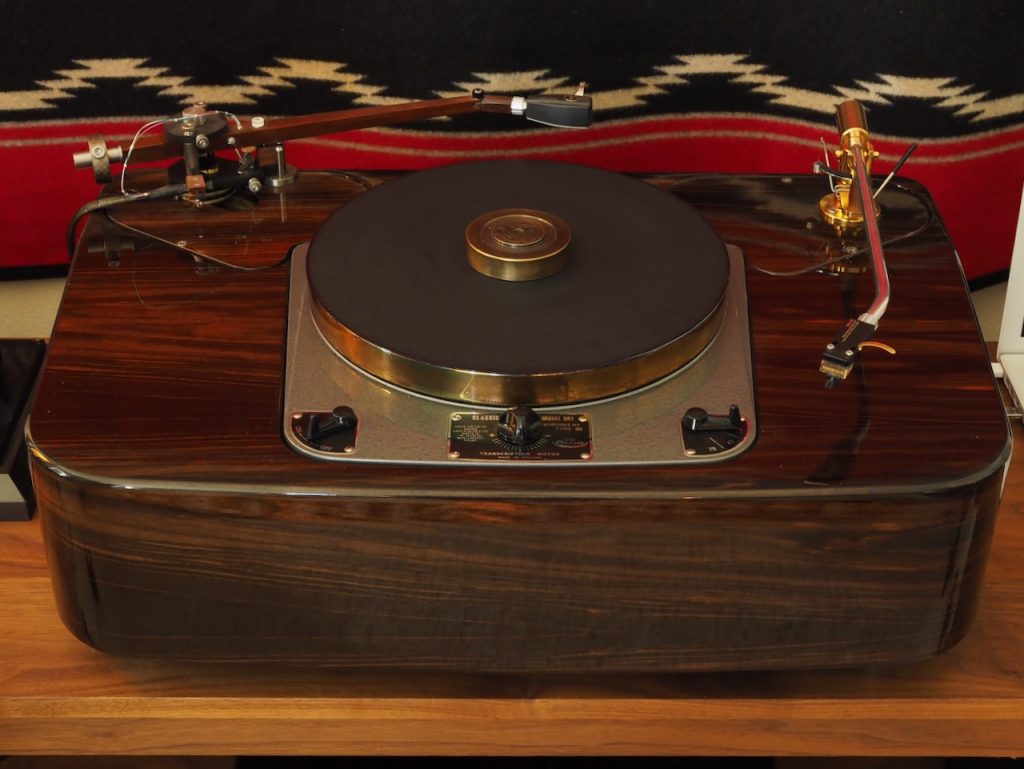
These days I’ve been doing 99% of my listening with Schick & Zephyr Mk III combination, and all of the vinyl listening impressions presented are with that combination.
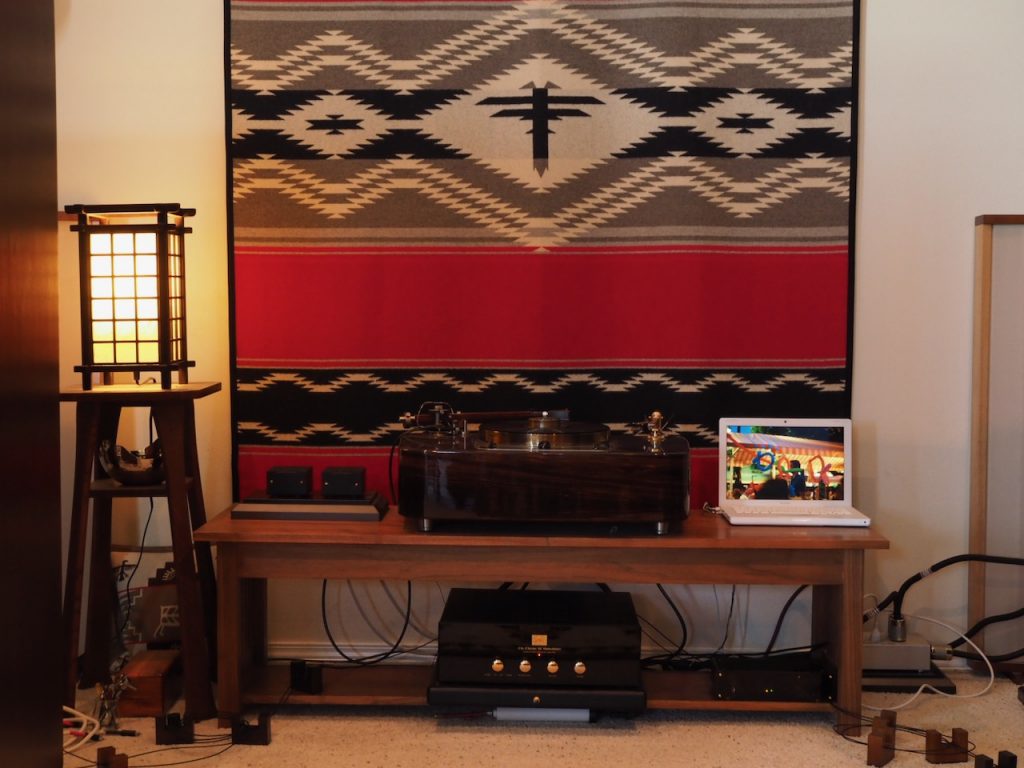
The CTC Garrard 301 is plugged into the Acoustic Revive RPT-6 Absolute NCF Power Distributor via the combination of an Acoustic Revive RAS-14-TripleC NCF Power Stabilizer and a Furutech G-320Ag-18 power cable.
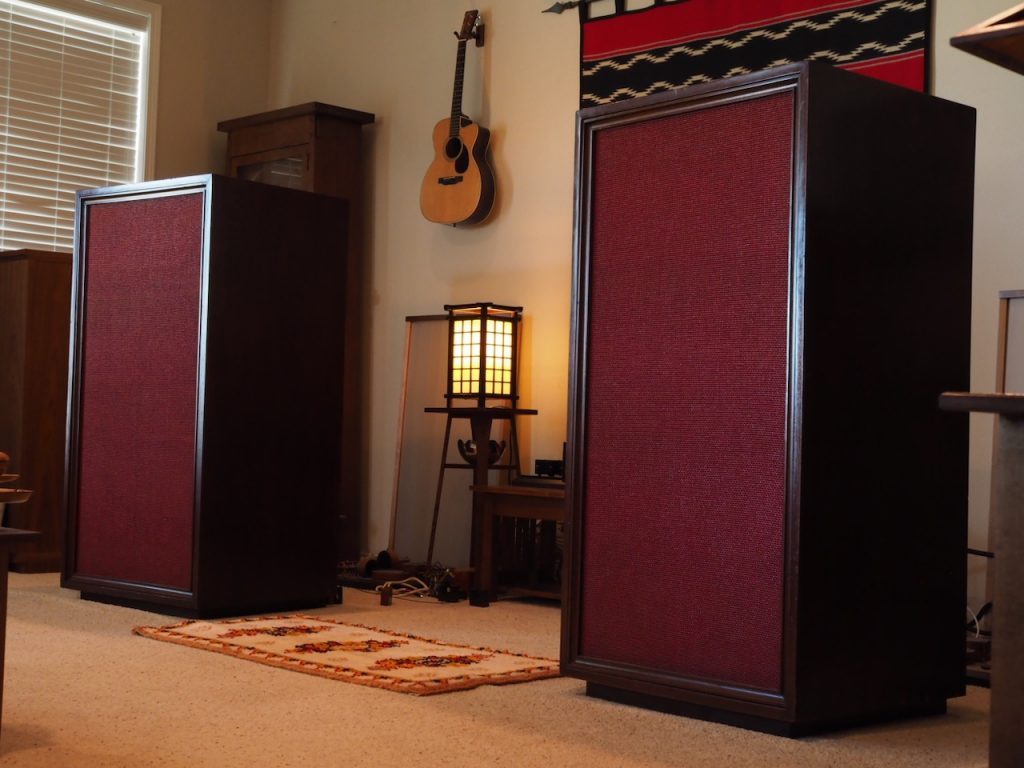
Other accessories included two Acoustic Revive RWL-3 Acoustic Conditioners for room treatment, Acoustic Revive RR-77 and RR-888 Schumann Ultra Low-Frequency Pulse Generators, and Acoustic Revive Quartz Under-Boards under the Intact Audio SUTs and the Acoustic Revive RPT-6 Absolute NCF Power Distributor.
Listening Impressions
Ok, that's all for "sneak peek" Part 2.
The full feature review of the Audio Note (UK) Oto Phono SE Signature integrated amplifier will be coming to Positive Feedback in the very near future!
As always, thanks for stopping by, and may the tone be with you!



























